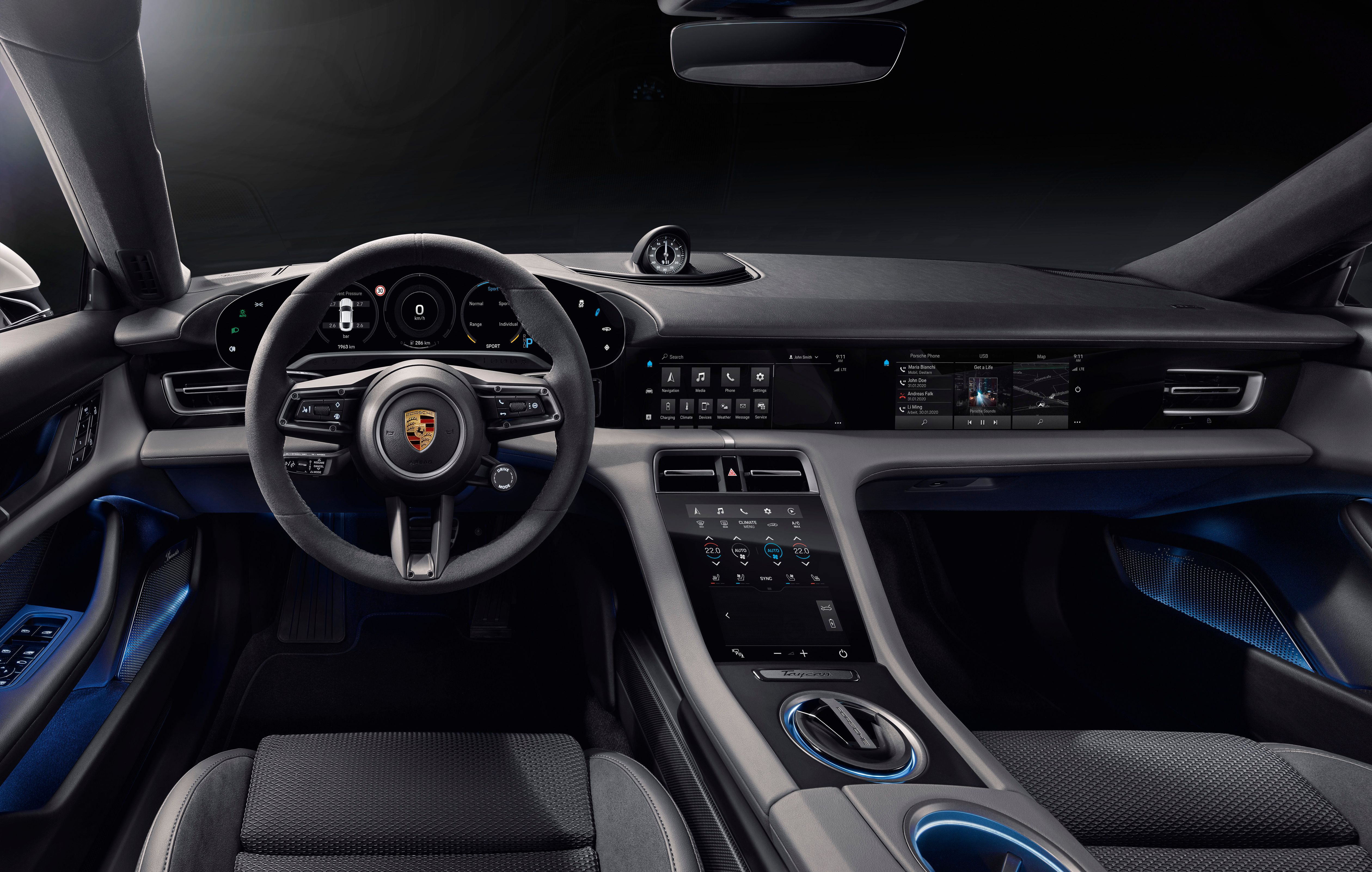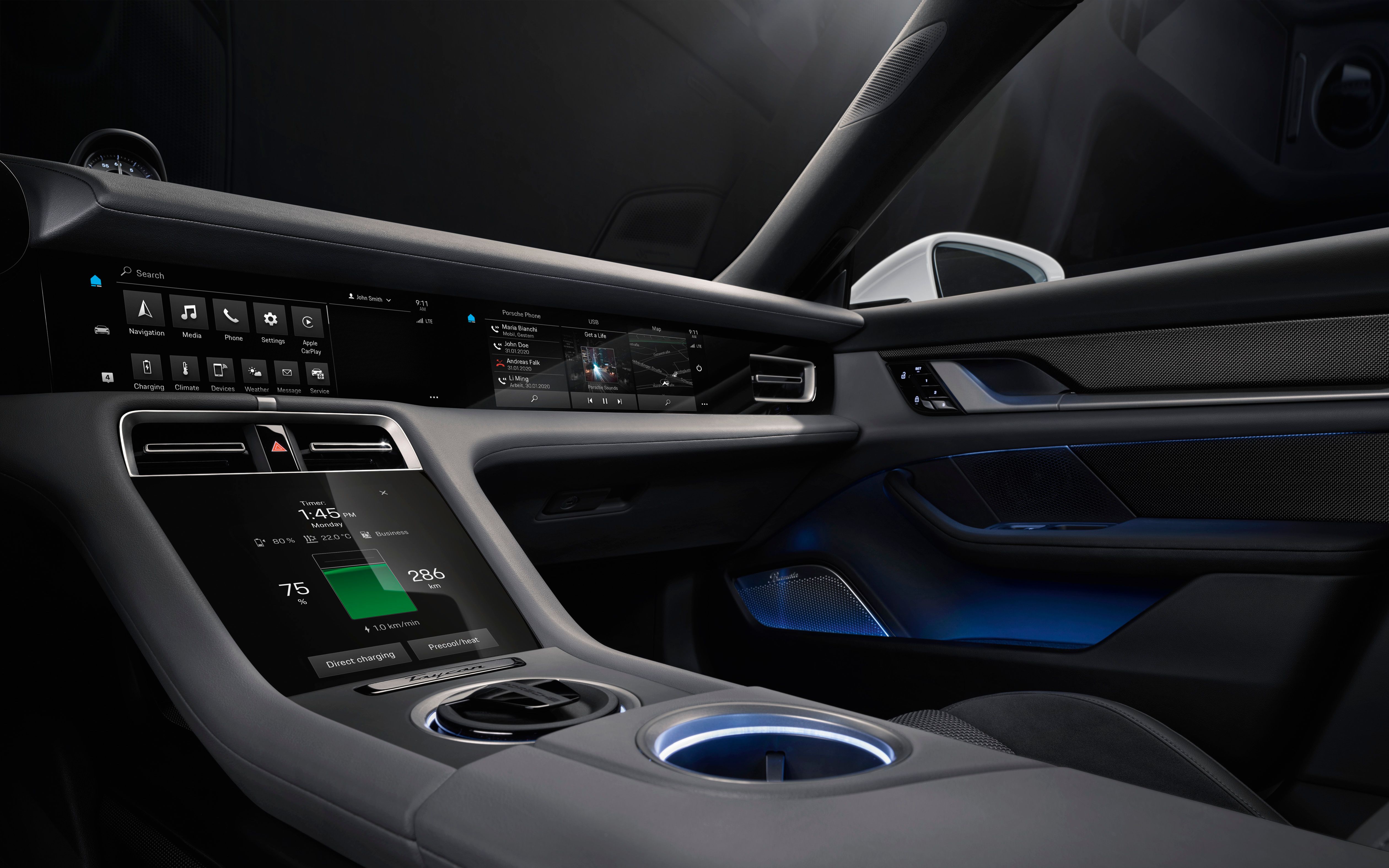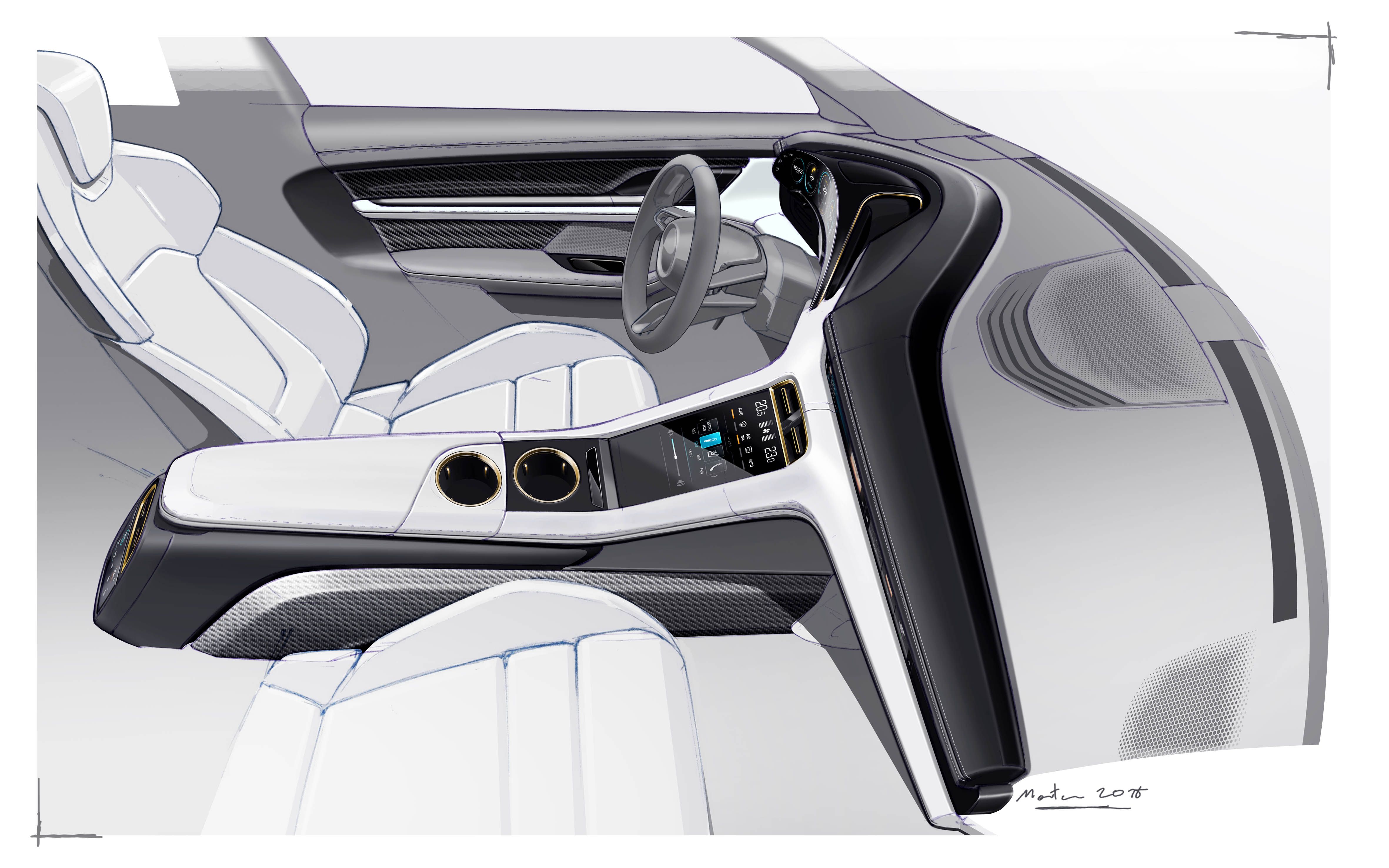As Cartoon Network’s boy-genius Dexter would put it, 2019 was a good day for science in the car world. Chevrolet launched its first-ever mid-engine Corvette in the shape of the C8 Stingray, Audi decided to finally bring the RS6 Avant in the U.S., and Porsche is taking a major step towards a full-electric sports with the new Taycan, formerly known as Mission E. Now, as it’s customary with pretty much every debut these days, there are things we know about the Porsche Taycan and some other things Porsche is likely to keep behind closed, well, lips until the EV makes its official debut on September 4. The latest development in the things we know about the Porsche Taycan has to do with the electric sports car’s interior, which Porsche saw fit to unveil in all its digital splendor.
2020 Porsche Taycan Interior
Porsche has always relied on its rich legacy when creating new models. And that’s only natural. But with the Taycan, the biggest challenge we can think of here was finding a way to intertwine the old and the new in one package that would appeal Porsche’s demanding clientele. The fact that the Taycan is a fully-blown electric-car with plenty of sportiness baked into it made the task even harder for Stuttgart’s interior designers. But luckily, it’s the ur-911 that came to the rescue.
Ivo van Hulten, Director of Interior Design at Porsche AG
The thing with electric car interiors is that they tend to fall on the minimalist side of things. Big screens, buttons, and knobs that went extinct, and all-touch-sensitive-everything is becoming the norm. In the opposite corner, Porsche’s interiors of late are clad with buttons - just have a look at the Macan, whose center console looks like a keyboard. By the way, we did the count, and there are no less than 50 buttons and knobs scattered inside the outgoing Porsche Macan.
After a closer look at the photos depicting the interior of the Taycan, it’s easy to recognize it as an out and out Porsche. Perhaps this is exactly what Porsche aimed for when it drew inspiration from the 1963 911’s clean interior. The cabin’s centerpiece, without a doubt, is the 16.8-inch curved screen that acts as the instrument cluster, and in our book, the best way to suggest that the Taycan is still a driver’s car. Speaking of drivers, they are given the opportunity to pick one of the four available display modes which alter the nature of the info displayed there.
Classic retains the round gauges that render the likes of speed, chassis settings, and new for the Taycan, a power meter that replaces the now-redundant rev counter in the middle of the cluster. Then there’s Map, which does pretty much what the name says, turning the power meter cluster into a dynamic map layout. Full Map, on the other hand, expands the standard map layout across the full area of the display and completely removes the round instruments. Lastly, Pure will filter out any additional info and will stick to just displaying the essential stuff, like speed, traffic signs picked up by the Taycan’s recognition system, and navigation directions offered via a minimalist arrow. There are also small touch-control patches located on the edges of the screen, which makes the instrument cluster wider than the steering wheel - a trait seen on the first 911 as well.
On the raised end of the center console, below a pair of twin air vents, an 8.4-inch touch panel with haptic feedback allows users to input air conditioning commands. It also supports handwriting for the quick input of the desired address to navigate to. Moreover, if the Taycan is specced with the optional four-zone Advanced Climate Control setup, those sitting in the rear get an additional 5.9-inch touch control panel with haptic feedback, which allows them to fiddle with the A/C as they please.
Porsche Taycan Interior - The Finer Things
The Taycan is still a Porsche, and it goes without saying that the digital revolution inside won’t change that status in terms of material choice. Porsche says customers will be able to pick their own combos when it comes to fit and finish, but at the same time, the carmakers will offer tried and tested alternatives such as tanned Club Leather OLEA (the result of a tanning process that involves olive leaves) as well as Race-Tex microfibre and Econyl; the latter is partly made of recycled fishing nets.
Final Thoughts
Porsche’s biggest challenge with the Taycan - if we are to willingly overlook the arduous R&D process it just went through - will be to come up with a cabin geography that blends in elements of old and new without looking over the top. Looking at the handful of pictures released by the carmaker, it looks like Porsche managed to bake in enough of both worlds: the digital and the analog.
We definitely love the scarcity of buttons and knobs for the simple fact that it suits a modern, all-electric vehicle. At the same time, Porsche’s decision to retain some of its trademark interior design cues that have been around since the original 911 came to life acts like a counterbalance. This way, the Taycan’s interior stays anchored in heritage but can still sport a well-placed and refreshing high-tech twist. So, yeah, it’s an A+ from us thus far.
Further Reading
Read our full review on the 2020 Porsche Taycan.
Read our full review on the 2020 Porsche Taycan CUV.
Read our full speculative review on the 2020 Porsche Taycan Sport Turismo.
Read our full speculative review on the 2021 Porsche Taycan GTS.
Read our full review on the 2018 Porsche Mission E Cross Turismo Concept.
Read our full review on the 2015 Porsche Mission E Concept.



